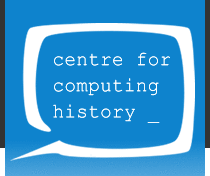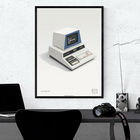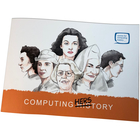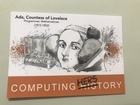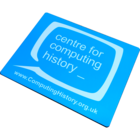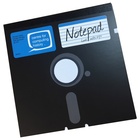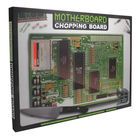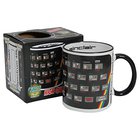|
Introduction
One often gets the impression that programming in assembly language is some very difficult and obscure technique used only by those advanced programmers. As it happens, assembly language is merely different, and if you have successfully used Integer or Applesoft Basic to do some programming, there's no reason why you can't use assembly language to your advantage in your own programs.
This book will take a rather unorthodox approach to explaining assembly programming. Because you are presumably somewhat familiar with Basic, we will draw many parallels between various assembly language techniques and their Basic counterparts. An important factor in learning anything new is a familiar framework in which to fit the new information. Your knowledge of Basic will provide that framework.
CONTENTS
1 APPLE'S ARCHITECTURE . . . . . . . . . . . . . .. . . . . . . . . . . . . . . .. . . . . . . . . . 1
6502 Operation. Memory Locations. Hexadecimal Notation.
2 ASSEMBLERS ........................................................ 13
General Discussion. Source Code. Object Code. Source Code Fields.
Pseudo Opcodes. Load/Store Opcodes.
3 LOOPS and COUNTERS .......................................... 23
Binary Numbers. The Status Register. Incrementing and Decrementing.
Looping with HNF.
4 LOOPS, BRANCHES, COUT, and PADDLES .............. 31
Looping with BFQ. Branch Offsets and Reverse Branches. screen Output using COlJ r. Reading a Game Paddle. Transfer Commands.
5 I/O ROUTINES using MONITOR and KEYBOARDS .......................................................... 41
Review of Concepts. Compare Commands and Carry Flag. Using Monitor Programs for I/O Routines. Reading Data from Keyboard.
6 ADDRESSING MODES ........................................... 51
Immediate, Absolute, Zero Page, Implicit/Implied, and Relative Addressing Modes. Indexed Addressing. Storing Pure Data.
7 SOUND GENERATION ROUTINES .......................... 61
Delays. Altering Program Length. Delay Value in Memory. Delay from Keyboard and Paddles.
8 THE STACK ........................................................... 71
LIFO. Stack Pointer. l'l!A !'LA. Stack Storage Capacitv.
9 ADDITION and SUBTRACTION .............................. 75
Binary Numbers. AllC. Clearing the Carrv. Two-Byte Addition. SHC.
Setting Carry for Subtraction. Positive and Negative Numbers.
Ones' Complement. Twos' Complement. Sign Flag
10 DOS and DISK ACCESS .......................................... 89
Disk Access. Overview of DOS. Diskette Organization. Modifying Access Utilities.
11 SHIFT OPERATORS and LOGICAL OPERATORS ......................................................... 103
Shift Operators. Logical Operators. AND. Operational vs. Processing Modes. Flow of Control. Inverse Flag. Masking. Inclusive OR. Exclusive OR.
12 I/O ROUTINES ...................................................... 121
Print Routines: Data Type; Special Type. Manipulating the Stack Return Address. Input Routines: Binary Input; Combination Applesoft/ Assembly Language.
13 READING/WRITING FILES on DISK ....................... 129
BlLOADIBSAVE. Name File Program using String and Single Key Input,
Print, and nos Command Routines. Text Files. Ol'EN!READ,
OPEN/WRITE. Simulating Program Execution: LA'JC, CCRLIN,
Memory Location $33.
14 SPECIAL PROGRAMMING TECHNIQUES ....................................................... 145
Relocatable vs. Nonrelocatabk Code. JM!' Commands. Determining
Program Location. JSR Simulations. Self-Modifying Code. Indirect Jumps.
Appendix A ................................................................. 163
Contest.
Appendix B ................................................................. 171
Assembly Language Commands: Description and Uses.
Appendix C ................................................................. 243
6502 Instruction Set.
Appendix D ................................................................. 259
Monitor Subroutines.
Appendix E ................................................................. 263
ASCII Code and 1ic'xt Screen Charts.
ISBN :
Publisher : Softalk
Author : Roger Wagner
Format : Spiralbound: 272 Pages
This exhibit has a reference ID of CH33248. Please quote this reference ID in any communication with the Centre for Computing History.
|
|
 Click on the Images For Detail
Click on the Images For Detail
|
